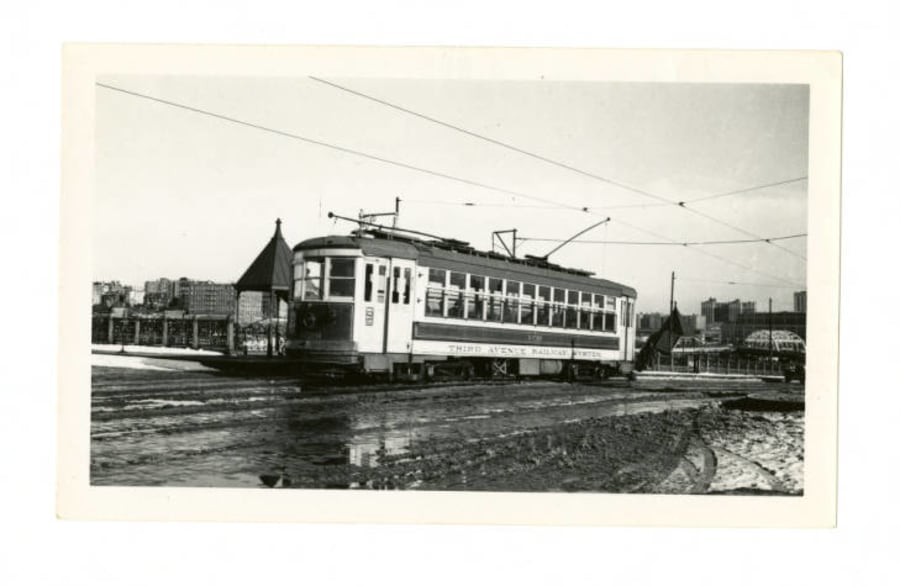SAN ANTONIO – Editor’s note: This content was created exclusively for KSAT Explains, a new, weekly streaming show that dives deep into the biggest issues facing San Antonio and South Texas. Watch past episodes here and download the free KSAT-TV app to stay up on the latest.
Streetcars pulled by horses and mules. This is the origin of public transportation in San Antonio.
In 1878, the San Antonio Street Railway Company started the first horse-drawn streetcar service from San Pedro Springs to Alamo Plaza.
“The arrival of streetcars in 1878 was entirely transformative,” said Hugh Hemphill, author of San Antonio on Wheels: The Alamo City Learns to Drive. “Journeys to San Pedro Park from downtown took two hours, and now they only took one hour.”
With the introduction of streetcars, San Pedro Avenue became a major road and downtown streets underwent a dramatic change.

Commerce was the busiest street in downtown San Antonio at the time, but it was too crowded and narrow to accommodate streetcars. Profitable business owners also did not want the inconvenience of streetcars.
“Houston Street was actually created by the streetcars and then that became valuable real estate,” said Hemphill. “All of a sudden, people who could not own a store on Commerce Street could afford to own a store on Houston Street.”
With multiple streetcar companies operating in downtown, conditions in the area were not ideal for the number of people in the area.
“It was full of horses. It was hot. It was full of flies and the smell was unbearable,” said Hemphill.
Streetcar routes started to extend past downtown. The second place to get a streetcar route was the original Southern Pacific Railroad Station followed by South Flores, and later to areas such as Woodlawn Lake and Alamo Heights.
“It had this enormous effect of changing the value of the land. People wanted to be near the streetcars so that land became valuable,” said Hemphill.

Electric streetcars with overhead power lines hit the roads in the 1890s.
For nearly two decades, streetcars were the primary mode of public transportation but declined in popularity due to many factors, including deteriorating downtown neighborhoods, the overall condition and quality of the streetcar experience and the cost to operate them.
“Being on a San Antonio street streetcar was very much like being a sardine can, and the oil was sweat,” said Hemphill. “You had to do all the maintenance on the cars, all the maintenance on the street, the maintenance on the overhead line.”
By the early 1930s, streetcars fizzled out as more people started to buy automobiles and ride buses. San Antonio became the first major city to abandon street cars in 1933.
Buses, which were city-owned since 1917, became increasingly popular, in part, because they could get people in and out of San Antonio military bases.
“The peak of bus service in San Antonio was during World War II,” said Hemphill. “San Antonio grew from a city of about 250,000 people to a city of about 450,000 people. San Antonio really grew with the military and with the wartime effort.”
San Antonio also used efficient short buses to transport smaller groups of 25 to 30 passengers. More stops and routes were added.
“It was a calculated decision to keep people happy and also make revenue. The short buses were less expensive to buy and less expensive to maintain. They also required less storage,” said Hemphill.

As the city’s bus system grew, the San Antonio Transit Company moved into the historic Tower Life building.
By the 1950s to 1960s, San Antonio buses made several more advances in public transportation.
"San Antonio was also the first city to have air conditioning buses,” said Hemphill. “Imagine that, most vehicles at that time did not have air conditioning.”
The city of San Antonio bought the transit company in 1959 and formed the San Antonio Transit System.
The transit system existed until 1977 when Bexar County voters approved a half-cent sales tax to create and fund VIA Metropolitan Transit.
VIA buses hit the road in 1978, exactly 100 years after streetcars pulled by horses made their way through downtown San Antonio.
VIA currently makes nearly 40 million passenger trips yearly in more than a dozen member cities across Bexar County.
Hemphill said part of what makes San Antonio a trailblazer in public transportation is that the people running the city’s bus systems have always been willing to listen and learn from the people living in the city.
“San Antonio, we’d like to think of it as being kind of sleepy and slow,” said Hemphill. “San Antonio has actually been cutting edge at the front end of all this stuff for a very long time.”




